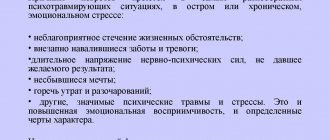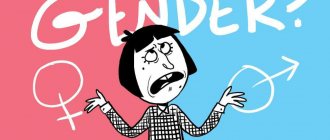Dysgraphia is a writing disorder manifested in the replacement or omission of letters, syllables, and words; combining words in a sentence or incorrectly separating them and other types. In simple terms, the child makes incomprehensible, repeated errors in writing, which cannot be corrected without special correctional work with a speech therapist.
Today, this disorder of written speech is increasingly found in children. According to studies, dysgraphia in children occurs in 80% of all cases among primary school students and in 60% among middle school students. Experts attribute this persistent form of speech disorder to the fact that many children entering first grade already have either a phonetic-phonemic disorder or general speech underdevelopment. Such violations do not allow the child to fully master literacy.
With a pronounced disorder of written speech, it is customary to talk about agraphia, i.e., a complete inability to write. Very often, writing impairment is accompanied by reading errors (dyslexia or alexia).
What is dysgraphia
Dysgraphia is a pathological condition in which there is a disorder in the writing process. About 50% of primary schoolchildren and approximately 35% of secondary school students are familiar with this disease firsthand. This pathology can also develop in adults (10% of all cases), in whom the functioning of higher mental functions has been impaired for some reason. In addition, this disorder is closely related to dyslexia, a deviation in the reading process, because both reading and writing are two components of one mental process.
Prevention of writing disorders in children
Prevention of written language disorders comes down to the development of higher mental functions in a child before he begins to master writing. Activities and educational games with children to develop fine and gross motor skills, games for attention and memory, exercises for the development of thinking in children, practicing a musical instrument - these are the best preventive measures.
How to teach a child to think, develop his intellect and memory? There are many play activities with a child that are aimed at developing mental functions. This is making pyramids and cubes, collecting nesting dolls and various construction sets, finishing poems and fairy tales, selecting pictures for a given sound or lexical topic (vegetables, fruits), solving riddles and puzzles, putting small objects on a thread or cord, sorting out different shapes and colors buttons or using all sorts of sorters for these purposes, games with cereals, finding differences, various games with objects, for example: put the bear under the table, take it from under the table, lift it above the bed, put it between chairs, etc.
The correct approach to the development of a child, the persistence and patience of parents when performing all speech therapy tasks, consultation with specialists and the prevention of violations will help the child acquire correct writing skills. The images below show examples of dysgraphic errors in writing:
History of dysgraphia
Writing and reading disorders were first identified as an independent pathology by the German therapist Adolf Kussmaul in 1877. After this, many works appeared that described various writing and reading disorders in children. However, they were considered as one disorder of written speech, and some scientists pointed out that it is generally a sign of dementia and is characteristic only of retarded children.
But already in 1896, the therapist W. Pringle Morgan described a case with a 14-year-old boy who had completely normal intelligence, but had writing and reading impairments (we were talking about dyslexia). After this, others began to study writing and reading disorders as an independent pathology, in no way related to mental retardation. A little later (in the early 1900s), the scientist D. Ginshelwood introduced the terms “alexia” and “agraphia,” which denoted severe and mild forms of the disorder.
As time passed, understanding of the nature of writing and reading deviations changed. It was no longer defined as a homogeneous optical disorder; different concepts began to be used: “alexia” and “dyslexia”, “agraphia” and “dysgraphia”; began to identify different forms and classifications of dysgraphia (and, of course, dyslexia).
Subsequently, disorders in the process of writing and reading began to be studied by an increasing number of specialists, including domestic ones. The most significant were the works of neuropathologists Samuil Semenovich Mnukhin and Roman Aleksandrovich Tkachev. According to Tkachev, the basis of the disorders is mnestic disorders (memory disorders), and according to the ideas of Mnukhin, their common psychopathological basis lies in a violation of structure formation.
Ultimately, in the 30s of the 20th century, dysgraphia (and dyslexia) began to be studied by defectologists, teachers and psychologists, such as R. E. Levin, R. M. Boskis, M. E. Khvattsev, F. A. Rau and others . If we talk about modern scientists and more specifically about dysgraphia, then L. G. Nevolina, A. N. Kornev, S. S. Lyapidevsky, S. N. Shakhovskaya and others made a significant contribution to its study. Based on the results of their research, we will continue our article.
Treatment of writing defects
Elimination of written defects must be approached with due care and patience. After all, this process can take a long time, sometimes many months and even years. Correction of writing disorders is easiest to carry out in children, since at an older age other psychological problems are added to this disorder.
Correction of written disorders is carried out using special exercises. They include tasks for recognizing similar letters, distinguishing elements of complex letters and pictures, exercises for developing perception, memory, and attention. If the problem is in acoustic recognition, then the child is given classes on recognizing sounds, identifying phonemes, constructing words, phrases and sentences. If necessary, they are taught the correct pronunciation of sounds.
There are also exercises for training motor skills; one of them is to draw a line along the maze without lifting your hand from the sheet of paper or changing its position. Other games and tasks are aimed at developing logic, thinking and vocabulary: subjects are asked to select synonyms or antonyms for words, call the listed objects in one word (combine them into a category) or vice versa - name the objects included in the named group. There may also be riddles, guessing proverbs, tasks like “finish the sentence or proverb.” Various word games (naming words that begin with the last letter of the previous one or the last syllable; collecting words from parts; searching for small words in one big one, composing words from certain letters, etc.).
To prevent written disorders, we can recommend the full development of the child. It is necessary to develop his intellect, thinking, memory, teach him competent speech, increase his erudition; Motor skills are also subject to development, which can be provided by drawing classes, playing musical instruments, assembling construction sets, etc.
Even if a violation of writing abilities cannot be eliminated, this does not mean that the person will grow up defective, especially if sufficient efforts are made for his overall development. It is enough to point out that dozens of world celebrities, including scientists and even writers, were dysgraphic and dyslexic. It is known, for example, that Albert Einstein's teachers considered him mentally retarded because he wrote and read very poorly; these features did not disappear even in adulthood, but did not prevent him from writing a letter to the President of the United States himself, in which he called for abandoning nuclear weapons tests due to their danger to humanity.
Hans Christian Andersen, the famous writer, was all his life a man practically incapable of writing. Publishing workers refused to accept his illiterately written texts, often without even reading them to the end. However, eventually those around him, including publishers, learned to ignore the form and turned to the content, which turned out to be unusually talented.
Agatha Christie was also an absolutely illiterate writer. Thomas Edison is one of the world's most brilliant inventors. This man, who built the world's first sound recording machine, spoke and wrote very poorly, which is why he was kicked out of school as a child.
Both Queen Victoria of Sweden and both George W. Bush, father and son, suffered from writing disorders, which confirms the possibility that the disorder can be inherited. The Orthodox “saint” Sergius of Radonezh, Leonardo da Vinci, the poet Anton Delvig, and Nikita Khrushchev all suffered from impairments in written speech. The list goes on and on. Such a number of famous dysgraphics shows that written speech is a very complex process and very often “fails,” but can be compensated by other personality strengths. The main thing is not to stigmatize such people and not consider them backward; however, they themselves can prove this with their achievements.
Causes of dysgraphia
Despite in-depth study, the causes of dysgraphia have not been clarified with 100% accuracy even today. But certain data is still available. For example, the above-mentioned scientists say that writing disorder can be caused by:
- Biological causes : heredity, damage or underdevelopment of the brain at different periods of the child’s development, pregnancy pathologies, fetal trauma, asphyxia, serious somatic diseases, infections affecting the nervous system.
- Socio-psychological reasons : hospitalism syndrome (disorders caused by a person’s long stay in a hospital away from home and family), pedagogical neglect, lack of speech contacts, upbringing in bilingual families.
- Social and environmental reasons : excessive literacy requirements for the child, incorrectly determined (too early) age of learning to read and write, incorrectly chosen pace and teaching methods.
As you know, a person begins to master writing skills when all the components of his oral speech are adequately formed: sound pronunciation, lexico-grammatical component, phonetic perception, speech coherence. If, during the formation of the brain, the disorders mentioned above occurred, the risk of developing dysgraphia is very high.
It is equally important to note that dysgraphia affects children with various functional impairments of the organs of hearing and vision, which cause deviations in the analysis and synthesis of information. And in adults, the impetus for the development of pathology can be strokes, traumatic brain injuries, neurosurgical interventions and tumor processes in the brain. Having a certain impact on human development, one or another of the above factors lead to dysgraphia, which can manifest itself in different forms.
The connection between oral and written speech
Developed oral speech is of great importance for the successful development of writing. In order for a word to be written correctly, the child must hear all the sounds it contains and, after analyzing them, select the desired letter.
Impaired phonemic hearing, which accompanies various delays in speech development, does not make it possible to write words correctly. Incorrect pronunciation of sounds affects their correct understanding and analysis. In cases of more serious hearing impairment, a teacher of the deaf will help you.
In order to master writing, a coordinated development of phonemic hearing, speech, and visual perception of letters is necessary.
In addition, other aspects have a great influence on the formation of written speech. As you know, the left hemisphere is “responsible” for oral speech. Subject symbols and images are the responsibility of the right hemisphere.
The timely development of interhemispheric connections and the formation of the activity of each hemisphere ensure the development of written speech. That is why manifestations of dysgraphia are quite often found in left-handers.
Types of dysgraphia
Today, experts divide dysgraphia into five main forms, each of which depends on what specific written operation is impaired or not formed:
- Acoustic dysgraphia – characterized by impaired phonemic recognition of sounds
- Articulatory-acoustic dysgraphia – characterized by impaired articulation and perception of phonemics (phonemic hearing), as well as difficulties in sound pronunciation
- Agrammatic dysgraphia – characterized by problems in lexical development and the development of the grammatical structure of speech
- Optical dysgraphia – characterized by undeveloped visual-spatial perception
- A special form of dysgraphia caused by immaturity of language synthesis
In practice, any type of dysgraphia in its pure form is quite rare, because in most cases, dysgraphia takes a mixed form, but with a predominance of one type. You can install it based on its characteristic features.
Dyslexia. general information
In most cases, in addition to dysgraphia, the child develops dyslexia. This disease is characterized by a selective impairment of the ability to master reading and writing skills while maintaining the ability to learn. It has a neurological origin.
Experts recommend that parents test their child for dyslexia before entering school. Signs of this disease include slow reading with rearrangement of letters. A mandatory visit to a speech therapist is recommended for all children under 6 years of age.
Dyslexia, just like dysgraphia, occurs due to uneven development of the cerebral hemispheres. These violations are not generated separately. The following types of dyslexia exist:
- phonemic;
- semantic;
- ungrammatical;
- optical;
- mnestic.
A person who has dyslexia is not difficult to recognize. As a rule, he may experience guessing reading, difficulties in retelling, many mistakes when copying, heightened aesthetic taste and irritability. People with dyslexia hold writing utensils quite unusually. If a child has at least one symptom, it is recommended to contact a specialist as soon as possible.
Symptoms of dysgraphia
Like any speech therapy disorder, dysgraphia has a number of its own symptoms. As a rule, it makes itself felt through systematic errors in writing, but a person makes these mistakes not out of ignorance of language norms and rules. In most cases, errors manifest themselves in the replacement or displacement of similar sounds or similar letters, omission of letters and syllables in words or changing their places, adding extra letters. There is also a fused spelling of many words and a lack of consistency between words and word forms in sentences. At the same time, low writing speed and difficult-to-read handwriting are noted.
But let's talk about the symptoms that can, with a certain degree of probability, indicate the development of a specific type of dysgraphia:
- With acoustic dysgraphia, there may be no disturbances in the pronunciation of sounds, but their perception will definitely be incorrect. In writing, this manifests itself in the replacement of sounds that a person hears with those that are similar to them when pronounced, for example, whistling sounds are replaced by hissing ones, voiceless sounds are replaced by voiced ones (S-Sh, Z-Zh, etc.), etc. .
- In articulatory-acoustic dysgraphia, errors in writing are associated specifically with incorrect pronunciation of sounds. A person writes exactly as he hears. As a rule, such symptoms occur in children whose phonetic-phonemic side of speech is underdeveloped. By the way, errors with dysgraphia of this type will be similar both in pronunciation and in writing (for example, if a child says “funny zayas,” he will write in exactly the same way).
- With agrammatic dysgraphia, words are changed by case, declensions are confused, the child is not able to determine the number and gender (for example, “bright sun”, “good aunt”, “three bears”, etc.). Sentences are characterized by inconsistency in word placement; some sentence members may even be omitted altogether. As for speech, it is inhibited and underdeveloped.
- In optical dysgraphia, letters are mixed up and replaced with those that are visually similar to the correct ones. Here it is necessary to distinguish between literal optical dysgraphia (isolated letters are incorrectly reproduced) and verbal optical dysgraphia (letters in words are incorrectly reproduced). Most often, letters are “mirrored”, unnecessary elements are added to them or necessary ones are left unwritten (for example, T is written as P, L as M, A as D), etc.)
- With dysgraphia, which is caused by unformed language synthesis, the child changes letters and syllables in places, does not add the endings of words or adds extra ones, writes prepositions together with words, and separates prefixes from them (for example, “on the street,” “on the table,” etc. ). This type of dysgraphia is considered the most common among schoolchildren.
Among other things, people with dysgraphia may also have symptoms that are not related to speech therapy. Usually these are disorders and disorders of a neurological nature, such as low performance, problems with concentration, increased distractibility, memory impairment, and hyperactivity.
If the symptoms discussed above are systematically manifested, it is necessary to contact a specialist who can conduct a full diagnosis and distinguish pathology from banal illiteracy. Such a specialist is a speech therapist. By the way, keep in mind that the diagnosis of “dysgraphia” is made only if the child already has writing skills, i.e. not earlier than reaching the age of 9. Otherwise, the diagnosis may be incorrect.
Advice for parents whose children need speech and writing correction
Under no circumstances should you scold children with an illness or yell at them. This behavior will only make the situation worse. The subject should feel care and attention from the parents. All work should take place in a comfortable environment. It should be understood that children are under some kind of pressure, which can affect their psyche and form psychological barriers that can limit their future lives.
If a teacher treats students rudely and constantly reproaches them for mistakes, then children can grow into amorphous people who will give up any endeavor at the first failure or mistake.
Those suffering from dysgraphia are not at all incurable. In 70-80% of cases, if you start correcting the disease in preschool age, the problem will be solved. You should be attentive to the child, in which case his problems will be visible at an early stage, which will greatly increase the likelihood of their elimination.
You should only seek help from an experienced speech therapist. It is also necessary to show the child to a neuropsychiatrist who can identify auxiliary abnormalities. Do not neglect the services of a tutor. The tutor will deal with only one student in a convenient environment, knowing the characteristics of his ward and taking them into account during training.
Every case requires a system to achieve the best results; treatment of dysgraphia is no exception. Classes should be carried out systematically, without disturbing the schedule. It is also necessary to determine the causes of the pathology.
Diagnosis of dysgraphia
As we said, to diagnose dysgraphia you need to visit a speech therapist. However, consultation with other specialists is very important. Such specialists include a psychologist, ophthalmologist, neurologist, ENT specialist. They will help eliminate defects in the organs of vision and hearing, as well as mental disorders. Only after this, a speech therapist, having studied the symptoms, can establish that dysgraphia is developing and determine its type.
Diagnostic measures are always carried out comprehensively and in stages. Written works are analyzed, general and speech development, the state of the central nervous system, organs of vision and hearing, speech motor skills and articulatory apparatus are assessed. To analyze written speech, a specialist may ask the child to rewrite printed or handwritten text, take dictation, describe a plot using a picture, or read it aloud. Based on the data obtained, a protocol is drawn up, and the doctor makes a conclusion.
The time at which it takes place also plays a huge role in diagnosis. It is best to seek advice at the minimum possible age (preferably in kindergarten) in order to be able to begin correcting the deviation in its early stages. If the necessary measures are not taken in childhood, dysgraphia will manifest itself in adulthood, and eliminating it will be much more problematic.
Which doctor treats dysgraphia?
Dysgraphia is usually reported by the child's teacher. He may already have experience working with such children. Next, you should contact a speech therapist and neuropsychiatrist. The main work is carried out by a speech therapist: he develops both hemispheres of the brain, teaches him to distinguish, pronounce and record sounds. A neuropsychiatrist will help identify concomitant disorders (if any), understand the causes of dysgraphia and prescribe medication. In some cases, other specialists are involved in solving the problem, for example, if a child has hearing problems, he can neither hear sounds nor record them.
Correction and treatment of dysgraphia
Unlike Western countries, where special programs have been developed for the treatment and correction of dysgraphia, there are no such programs in Russia yet. That is why correctional measures should begin already at kindergarten age, and include special methods and techniques that speech therapists know. But with the help of a regular school curriculum, dysgraphia cannot be eliminated. Actually, no one can completely eliminate the deviation - such is its specificity. However, it is still possible to bring your writing skill closer to ideal.
Corrective programs are necessarily developed taking into account the individual characteristics of each individual case and, of course, the form of the violation. To correct the deviation, the specialist develops a system for filling gaps in processes important for the formation of writing skills, and works on the development of speech and its coherence. Also, tasks are given for the formation of grammar and the development of vocabulary, spatial and auditory perception is corrected, and mental processes and memory are developed. All this leads to the development of writing skills.
In addition to speech therapy, doctors often use physical therapy, massage, and physiotherapy. As for drug treatment, its feasibility and effectiveness remain a big question.
If you decide to be directly involved in the treatment of dysgraphia in your child, use play activities. It is useful for younger schoolchildren to be given tasks to compose words using magnetic letters - this significantly reinforces the visual perception of letter elements. And writing dictations improves auditory perception of sounds.
It is useful to play historian with your child - when the child writes letters with pen and ink. You need to choose your regular writing tools wisely. It is recommended to buy pens, pencils and markers with a rough or uneven body, because... they massage the distal ends of the fingers, through which additional signals are sent to the brain.
In fact, there are many options for working out writing deviations, but all of them must be discussed with a speech therapist. We also recommend consulting specialized literature. Pay attention to the books by E. V. Mazanova (“Learning not to confuse letters”, “Learning not to confuse sounds”), O. V. Chistyakova (“30 lessons in the Russian language to prevent dysgraphia”, “Correcting dysgraphia”), I. Yu. Ogloblina (Speech therapy notebooks for the correction of dysgraphia), O. M. Kovalenko (“Correction of written speech disorders”), O. I. Azova (“Diagnostics and correction of written speech disorders”).
These books contain a lot of useful material for self-study at home. But a quick result is hardly possible, and therefore you need to be patient and respond to mistakes adequately. Classes should be systematic, but short-lived; Be sure to give your child the opportunity to relax, play and do his favorite things. And take the time to watch the video “How to overcome dysgraphia”, from which you can also learn a lot of useful information.
In addition, we note that even if the problem of dysgraphia is not relevant for you, this does not mean that you can write it off. In order to prevent it from developing, we advise you to carry out preventive measures from time to time, about which a few words also need to be said.
What should teachers and parents do?
Eliminating such a problem cannot be done alone: parents, teachers and doctors must unite and agree on their actions. Prescribe treatment, perform certain exercises. Perhaps the child should be transferred to another school (specialized) or hired a tutor who can professionally perform exercises with the child at home.
We must not forget that “dysgraphics” are very often acutely aware of their problem and are afraid to manifest it again: they miss lessons, lose notebooks in the Russian language, and communicate little. The task of adults, in addition to treatment, is to provide psychological support to the child: do not scold, show interest in success, help.
Prevention of dysgraphia
Prevention of dysgraphia involves certain actions even before your child learns to write. They include exercises to develop attentiveness, memory, mental processes, spatial perception, visual and auditory differentiation and other processes responsible for mastering the skill of writing.
Any, even the most minor, speech disorders must be corrected immediately. It is equally important to expand a child’s vocabulary. At an older age, you need to train your handwriting. We also want to offer you several exercises that can be used both for the prevention and correction of dysgraphia.
Ways to correct the disease
Dysgraphia in younger schoolchildren (correction, exercises and treatment will help cope with the problem) is urgent. As soon as the problem is identified, classes must begin immediately. If the disease develops, the child should be treated by a speech therapist and psychologist.
The program for correcting dysgraphia in younger schoolchildren is determined depending on the form of the disease. Parents should take this problem seriously and follow the recommendations of specialists. An excellent option would be to transfer the child to a speech therapy school, but not every city has one. Most often, parents need to work with their children themselves.
Correction of dysgraphia in younger schoolchildren is carried out in the following ways:
- conducting classes to improve memory;
- increasing vocabulary;
- remembering spelling norms;
- written assignments of various nature;
- rehabilitation in the form of massage, taking sedatives if necessary.
Exercises for the prevention and correction of dysgraphia
These exercises are quite suitable for children of primary school age, but can also be performed by older children:
- Take your child to a book that he or she is not yet familiar with. It is advisable that the text be printed in a medium font and also be a little boring so that the child’s attention is not distracted by the content. Give the task to find and underline a specific letter in the text, for example S or P, O or A, etc.
- Make the task a little more difficult: let the child look for a specific letter and underline it, and circle or cross out the letter following it.
- Invite your child to mark similar paired letters, such as L/M, R/P, T/P, B/D, U/Yu, A/U, D/G, etc.
- Dictate a short passage of text to your child. His task is to write and speak out loud everything he writes, exactly as it is written. At the same time, it is necessary to emphasize the weak parts - those sounds that are not paid attention to during pronunciation, for example, we say: “there is a cup of milk on the table”, but we write: “there is a cup of milk on the table”. These are the parts the child should emphasize. The same applies to finishing and clearly pronouncing the endings of words.
- An exercise for developing attention and gross motor skills - movements of the body, arms and legs. The idea is that the child draws a continuous line with a pen or pencil without changing the position of the hand and the sheet. Special collections of drawings are best suited for this, the nodal points of which are marked with serial numbers for connection.
- Explain to your child the differences between hard and soft, dull and voiced sounds. Then give the task to select words for each of the sounds and do an analysis of the words with him: what letters, syllables and sounds they consist of. For convenience and clarity, you can use various objects.
- Train your child's handwriting. To do this, it is useful to use a squared notebook so that the child writes words by placing letters in separate cells. Make sure that the letters completely fill the space of the cells.
And a few more tips for conducting classes:
- The environment should be calm, the child should not be distracted by anything
- Select tasks according to the child’s age and abilities
- In case of difficulties, help your child, but do not complete the tasks yourself
- Do not teach your child foreign words if he is not yet psychologically ready for it.
- In everyday communication, speak as correctly and clearly as possible
- Do not repeat after your child words and phrases that he pronounces incorrectly.
- Remember to choose your writing tools carefully
- Provide psychological support to the child, because often children with dysgraphia feel “not like everyone else”
- Never scold your child for mistakes
- Encourage and praise your child for any successes, even the smallest ones.
Remember that a competent approach to education, care and attention to the child, as well as extreme attentiveness to the process of his development will help you recognize deviations in time and take measures to correct and eliminate them. And we wish you and your children success in learning and mastering new skills!
We also recommend reading:
- Storytelling
- Dyslexia: Definition, Causes, Symptoms and Treatment
- Causes of illiteracy and voluntary illiteracy
- Overcoming information overload
- Duality of personality: me or us
- Tips for Improving Non-Fiction Writing
- Bipolar disorder: definition, causes, episodes, treatment
- Neurolinguistics: Brief Description and Key Ideas
- How to independently learn to write correctly in Russian
- Diogenes syndrome
- Literacy. Is it necessary in the modern world?
Key words:1Children
Exercises for self-study
It is impossible to completely solve this problem at home without the participation of specialists. But if parents follow the recommendations of the speech therapist and work with the child, following all the instructions, then the result of joint activity will not be long in coming. There are many exercises that parents can do with their child at home.
- To train motor skills, use the Labyrinth exercise, when the child is asked to draw a continuous line. In this case, the child should only move his hand; do not allow him to change the position of the sheet. Finding objects and letters in story pictures. Drawing and shading of graphic dictations.
- To develop attention and in case of optical-spatial disorders, it is recommended to perform tasks on constructing letters from elements, transforming the resulting letters into others; to decipher the diagrams and symbols used to designate the letters. For example, 2-p, 3-t. Search for given letters in objects, insert missing letters into words, sentences and texts. Exercises in which the child must cross out, underline or circle a given letter or several letters in the text will help to remember the visual image of letters.
- Exercises aimed at correct and clear pronunciation of impaired speech sounds. An adult and a child look for objects with a given sound, determine the place of the sound in a word, come up with words and sentences for a given sound, learn poems and tongue twisters.
- Games and tasks for the formation of the lexical and grammatical structure of speech, for example: “Say the opposite,” when you need to select words or phrases with the opposite meaning. Or “Find the Whole,” where the child is asked to guess and draw an object based on its parts. For example: the bottom, lid, walls, handles are the pan of eyes, eyelashes, forehead, nose, mouth, eyebrows, cheeks are the face. Guessing riddles using generalizing words naming the purpose, location, situation in which the object is located. For example: they grow in the garden or in the forest, compotes and jams are made from them, it is useful to eat them raw - berries.
- Exercises to develop a child’s phonemic system. Determining the location of the sound (at the beginning, in the middle, at the end) with the help of a fish or squirrel. A fish is cut out or drawn and divided into three parts: the head is the beginning of the word, the body is the middle, and the tail is the end. Chain game, when an adult calls a word, for example, bus, and the child comes up with his own word for the last sound, for example, “sleigh”. The one who does not break this chain wins. You can also choose a word with the last syllable, for example, fish - grandma - porridge, etc.
Daily and systematic home training to eliminate writing disorders will speed up the process of correction in the child.
“Writing out loud” task
This is probably one of the most effective exercises. There is no substitute for it; the essence is to speak out loud what is written, with the obligatory emphasis on the weak parts. This should be done slowly, pronouncing each letter clearly. For example: a cow gives milk.
The exercise is aimed at improving literacy levels. Weak beats are sounds that are not given attention during fluent speech and are pronounced incorrectly. An important point is to pronounce the word to the end, highlighting the endings. Children suffering from dysgraphia can very rarely write a complete word. They often put sticks at the end that can be mistaken for letters. However, the number of these lines does not correspond to the number of letters that should be in this word.
With the help of this task, acoustic dysgraphia is corrected in younger schoolchildren. Exercises aimed at treating the disease are quite varied. But the fundamental one is “Write Out Loud.” You need to teach your child to pronounce every written word, and then the result will not be long in coming.
Consequences in the absence of correction
Ignoring problems with dysgraphia can cause serious problems, such as:
- inability to fully master the school curriculum, especially the subjects “Russian language” and “literature”;
- difficulties with written surveys;
- intellectual retardation due to failure to master school knowledge;
- anxiety;
- suspiciousness;
- communication problems with peers and classmates;
- low self-esteem;
- deviance of behavior.
The need to write something will cause discomfort and fear in the child. There may be problems with mathematical terms and others.
Handwriting correction
The fact is that for a child with dysgraphia, handwriting causes a certain difficulty. Typically, such children write either very small or extremely large. Sloppy handwriting is not a negative thing, and you shouldn’t scold a child for it.
It will take about three weeks to teach a student to write correctly. First, you need to purchase a squared notebook and ask to reproduce the text on paper. The letter should not go beyond the cell - the main rule. You need to monitor this and support the child in every possible way.
You cannot overload children; a few correctly written lines a day are an excellent result. Even if parents are tired of working with their child, it is strictly forbidden to show it, much less raise their tone. It is recommended to use pens with a ribbed surface as writing instruments, as well as pencils in the shape of a triangle.
At home, you can play with your child by giving him a pen and ink. Then he will try to write correctly so as not to spoil the game.











